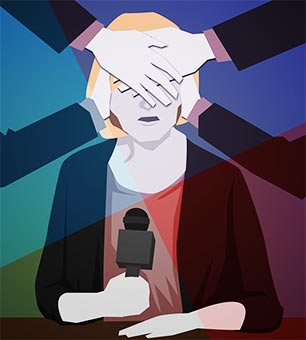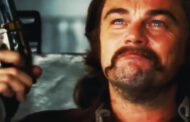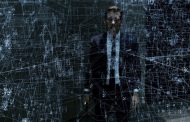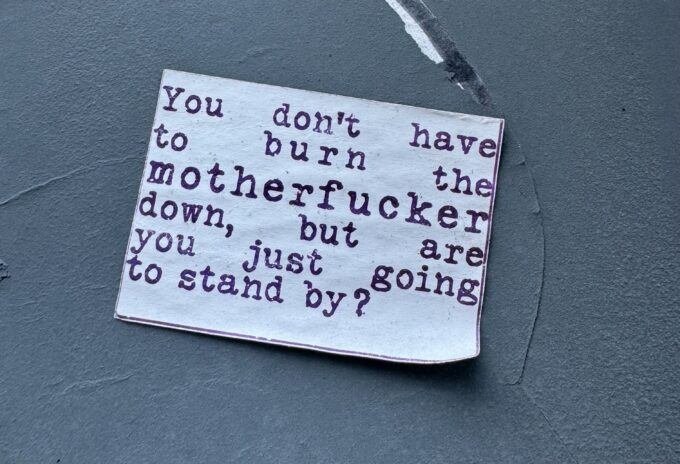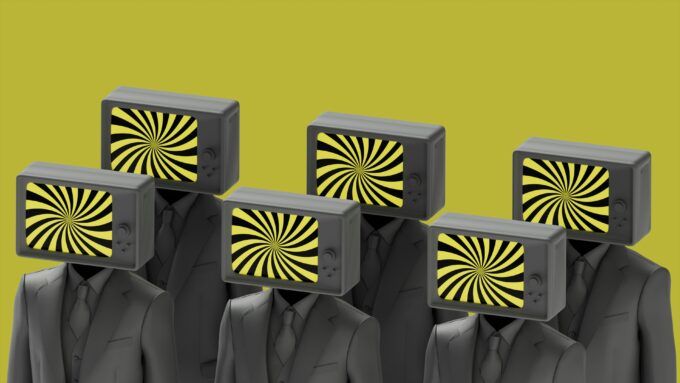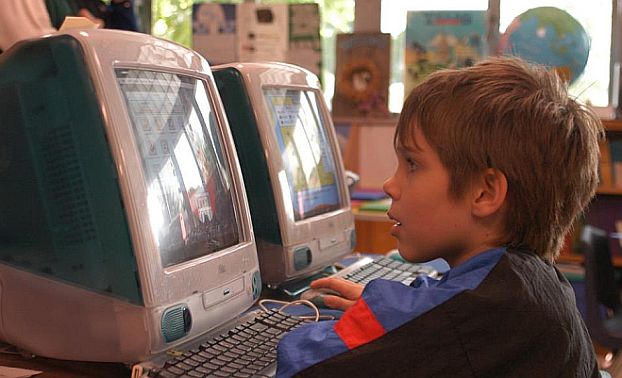
boyhood
Published on http://brightlightsfilm.com
Now a whole is that which has beginning, middle, and end.
– Aristotle, The Poetics
Have you not done tormenting me with your accursed time! It’s abominable! When! When! One day, is that not enough for you, one day he went dumb, one day I went blind, one day we’ll go deaf, one day we were born, one day we shall die, the same day, the same second, is that not enough for you?
– Samuel Beckett, Waiting for Godot
Mason: So what’s the point?
Dad: Of what?
Mason: I don’t know, any of this. Everything.
Dad: Everything? What’s the point? I mean, I sure as shit don’t know. Neither does anybody else, okay? We’re all just winging it, you know? The good news is you’re feeling stuff. And you’ve got to hold on to that.”
– Richard Linklater, Boyhood, 2014
* * *
Consider director James Marsh’s film A Theory of Everything, 2014, as explanatory notes to Christopher Nolan’s film Interstellar, 2014. With these notes in hand, try to reconcile quantum theory or Einstein’s relativity and clarify the role of black holes in all this. Scientists have not yet been able to narrate these mind-bogglers as clearly as Newton and classical physics have been narrated. None of what these two films take on comes to light as smoothly as Newton came to light for Alexander Pope:
Nature and Nature’s laws lay hid in night:
God said, “Let Newton be!” and all was light.
So you can see that it is not an easy matter for a movie, independent or commercial blockbuster, to handle time within our millennial understanding, which is, frankly, twitter size. A Theory of Everything gets around the opaqueness of time theory by focusing on Stephen Hawking’s romantic early life. Biopic is the way to go when dealing with quantum physics, or with the Turing Machine, as in The Imitation Game (2014) where the machine shows up as a haggle of wires but Keira Knightley’s face comes across with wonderful clarity.
Richard Linklater’s Boyhood presents the other millennial take on time, namely, the one with which we are all more familiar.
Time is a daily scroll down Facebook postings, a hashtag barrage that self-destructs quickly, a reality TV show that eschews script and theme and captures time passing in the lives of “real” people like us, a couple of million smartphone selfies over a period of time, a rapid flurry of jagged jump-cuts, sudden blackouts and overlappings, and the computer-generated virtual and interactive reality of video games where time can be morphed.
“It’s like it’s always right now,” Mason tells Nicole, and indeed yesterday’s tweet or Facebook posting or smartphone text vaporizes, partially because the daily tsunami of “information” pushes it into extinction, partially because our attentiveness has collapsed, and partially because we vaporize the forgettable. And, ironically, though we are in our millennial cultural clime convinced we are masters of more than any previous age was even aware of, Mason’s mom, played by Patricia Arquette, tells Mason, “I always thought there would be more.” She may be talking about more ex-husbands but probably not. It’s more likely she’s expressing more than a personal frustration but rather a cultural one, a relatively new one, one that Linklater has been chronicling since Dazed and Confused (1993) and Slacker (1991).
The time that could pass differently in different reality frames, as expressed hilariously in the first scene of Slacker, the time that cannot be brought to continuity, coherence or meaning in any one reality frame, has now in the new millennium become a series of “and then … and then … and then,” a passion for the next moment and an obliviousness regarding the last. The millennial timescape is a fragmented timescape, not subject to interpretation and understanding but only to the rule of “Like.” When the technology of transmitting typed words or smartphone photos and GoPro filming accompanies our every movement and all this runs far ahead of thought, a culture leaves behind both the facility and the need to answer the question “What’s the point?”
Thusly, Linklater in Boyhood, a coming-of-age epic, gives up pursuing an Orson Wellesian “rosebud” or following a step-by-step Hitchcock script, or delving magically and absurdly into life’s meaning in a Fellini fashion and allows real time to unfold over a twelve-year period. If, by chance, in those twelve years quantum physics or black holes show up, why then the camera will be on that. In other words, time passing is itself not only the subject but also the scriptwriter and the director. Linklater pursues this not in an older tradition of neorealism, of continuity filming in the manner of De Sica, of running an unedited focus creating a closer verisimilitude than montage filming. Neither is this an experimental film in the fashion of Andy Warhol’s Sleep (1963), in which we watch a man sleeping for five hours and twenty minutes. Sleep was then both disturbing and questionable because the culture was yet firm in its attachment to a single reality and art’s relationship to it that Warhol was messing with.
Times have gone millennial, and the sense of time in Linklater’s Boyhood meshes with a culture that is disposed to seeing reality, time, and art in ways that we are just beginning to recognize. The millennial audience does not require a script because the search for meaning is over. And it is over not because it has been found but because it is irrelevant. You do not seize the moment because to do so would require intent and purpose, in short, a script. Why and when and how you seize the moment and what comes of this are plot issues. Now, you let the moment seize you because that is what our hi-tech world does. Time is technologized and we become subject to it. We are mastered by our gadgetry; technology now insists that we know it while our knowledge of the world, of boyhood, for instance, is no longer a matter of interpretation but instead the grist for software enabled by hardware. The off-line world stands for so little and is so unfamiliar that we believe Linklater’s disjointed family footage is an epic.
Although the view that time seizes us seems to be Linklater’s only diegesis in the film, apart from the Dad/Mason lines quoted above, it is a hope that the film does not realize. Filming time passing over twelve years does not itself seize us. What seizes us in film is the transformation of time into human experience in such a way as to either reveal meaning or expand our affective response to such experience. Time just passes; art extracts and shapes what characters do in emplotting their experiences within the passage of time. Linklater gambles that time is sufficient to seize us and that art is an obstruction. And in this, he mirrors the views of the American cultural moment he has been adept at recognizing.
Conflict and tension that ordinarily develop when an audience identifies with a character or ideas are given up in Boyhood because Linklater gives up lining up the ducks through either the script or the directing. It sounds like the mission of 19th-century Naturalism, comically portrayed in George Gissing’s character Harold Biffen in the 1891 novel New Grub Street. Biffen is on a longer than twelve-year project in writing his novel Mr. Bailey, Grocer, an epic work that attempts to represent an ordinary man’s everyday life without editing or any authorial intrusions. This, in Biffen’s view, is true verisimilitude, where art is not allowed to distort the natural flow of time. Time sets up no signposts indicating where the meaning lies. To be true to things as they were is to restrain from interposing. In other words, privileged actions and words are not extracted so that a selected form of experiencing is imposed upon the reader. Biffen’s suicide is perhaps spurred by his ultimate realization that Mr. Bailey’s life on the page is as boring as his life in the world and that if anything was to be made of it, art would have to take up the task, a task that Biffen, like Linklater, has given up.
Linklater, however, does indeed do a great deal of selection of what to show and what not to show, covering the twelve years in installments and within those installments allowing certain passages of time to be shown, though refraining from selecting for the sake of a cohering theme or conflict. Traditionally, character needs to be revealed, dialogue must reveal character and forward the plot, and that plot, after various conflicts, exposes a theme that existed a priori. Art brings life to some meaning. When the theme is that time gives us no theme, or that the flow of time is the only real theme, or that we must be left to create our own theme, the implication is that art corrupts the truth of reality. And we live in such a moment, a time when any socializing of meaning and any attempt by art to extract truths that extend beyond personal determination to social relevance is met with distrust. We protest only if some theme, conflict, experience, message, and so on were imposed upon us. In a way, this is transference to an American distrust of politics, government, anything with the word “public” in it, and a social rather than personal moral, political, and aesthetic sense.
If Welles had done Citizen Kane (1941) in this fashion, we would not be led by Thompson the reporter to talk to all the people central in Kane’s life. Linklater’s way, the Boyhood way, would not be to delve into Kane’s psychology or interrogate the possibility of advancing through myriad truth stories to the truth, or suggest the possibility of different realities living within different notions of truth. Welles would not have done such a film because neither he nor his times would accept or understand such a film. I am not here applying a corrective rod to Linklater’s film by comparing it with the most critically acclaimed movie of all time. I am, however, pointing out a serious departure from a notion of film as an art form to a notion that more is disclosed in time and by time itself when the filmmaker “just wings it.” Welles’s Kane managed to incorporate both a late-twentieth-century modernist sensibility and the very beginnings of a postmodern one within the most exemplary display of film as an art form. The absence of any attempt to transform a boyhood undergone in a different cultural moment, call it millennial, into an aesthetic whole is a step back from fulfilling the potential, or even recognizing, film as an art form.
That view is far from the most accepted critical appraisals of Boyhood, which received a 100% approval from the Metacritic film review site, the highest ever given for a film reviewed by the site. The film won the Golden Globe for best dramatic film of 2014. It seems clear that the cultural moment, at least for Americans, is right for this film. Film and the moment mesh. We are immersed in the belief that time itself can only be filled with what we ourselves personally know and experience, and we can now know instantaneously whatever we want to know. Boyhood accommodates that presumption. The manner in which past time or present time comes to meaning is now almost suddenly at our own disposition. The mediation of art between raw life and us is no longer required. The need to bring experience to a level of meaning beyond what suits us personally has all but vanished. What we like cannot be hindered by a search for meaning, just as the passing of time is only hindered by art’s intrusions and its mission to bring to form what is without form.
And yet the film remains as an aesthetic object existing outside what we like or do not like. The title, Boyhood, is perhaps the most controlling part of the film. We are not to think of it as Momhood, or Girlhood, although the circumstances of this family impacted not just Mason but all three. Somehow, we wander away from Samantha, who at first seems the live wire, and the focus is placed on Mason. Nevertheless, it is Mom and her decisions to marry, to move, to go back to school that is at center stage. When all is haphazard except the movement of time, there yet remain the demands of picturing that, of giving voice to that. Perhaps there were several working titles over the years before Linklater found his way to focusing on Mason because he could then draw upon his own boyhood experience. The fact that the film rests late on Mason would present a problem of linking the early film with the later, but that is not a problem when a film’s aesthetic integrity is not an issue. You do not want an artifact but an open terrain for the viewer to wander at will, mainly because viewers and readers no longer suffer any guidance.
This film opens itself to audience interaction in the same fashion that anything in social media, from Facebook to Twitter, lies open to a barrage of response that allows your personal participation. It is as if an artistic whole, an aesthetic completeness, is like an imposition of authority outside your own will, your own preferences and is therefore seen as an attack on your personal freedom to choose. A film tightly wrapped in a script with progressing theme, conflict, and a plot with a beginning, middle, and end remains impermeable to the audience participation and interactivity we now demand. Boyhood offers a kind of blank canvas stretched over twelve years on which anyone’s childhood can be drawn.
Linklater has pointed to Scorsese’s Raging Bull (1980) as a film that changed his whole perspective on filmmaking. The contrast between Boyhood and Raging Bull is first a contrast in pre-millennial and post-millennial attitudes. Scorsese’s is a “mean streets” realism, a character study, though the character was based on a real life, that through the studied fine acting of Robert De Niro reveals to us the braid of complexity and banality, of sensitivity and brutality, of intelligence and instinct of character and setting. Scorsese reveals both the amusing and tragic features of a whole world, of a character in a certain cultural surround, on a period stage, and certainly of a certain class.
Linklater’s Boyhood, on the other hand, eschews any revelation of character development designed by a script, any attempt at linking surround to character and action, and any resolution of plot emerging from its prior development. All of this is accomplished by Scorsese in Raging Bull but is given up by Linklater in the belief that a candid, unrehearsed, untrained portrayal will be more “real” than an artful one. Linklater is not really taking a chance that neither of the kids he selects will turn out to have no acting talent because acting talent is not required. And, as chance would have it, Mason can only do what Linklater wants him to do: be a kind of passive, tabula rasa who is presumably absorbing everything and is yet too young to reveal either that process or what eventually develops. Mason is a sort of unformed, empty space niched in the reality that Mom and others are creating around him. Acting would be required if he had to seize the moment, that is, project his feelings and thoughts into these twelve-year installments of time. But as the approach is to have the moment seize him, a cool, passive detachment is all that is required.
Once again, it’s more “realistic” to show a raw reality than one shaped by art. We are here far from various film Bildungsroman from James Dean in East of Eden (1955) and Rebel Without a Cause (1955), Leonardo Di Caprio in This Boy’s Life (1993), Johnny Depp in What’s Eating Gilbert Grape (1993), or Ray Liotta in Scorsese’s own Goodfellas (1990). This is, in the words of Ethan Hawke on NPR, a film about “an adult being born.” If the film is autobiographical, as Patricia Arquette says in the same NPR interview, then Linklater is exploring over a twelve-year period his own birth into adulthood. The film, then, is the raw material out of which at some point Linklater finds some meaning, or not. Perhaps he will one day aesthetically transform that into a film. Only an audience already preferring the “acting” of real people as in reality TV, or their own performances on YouTube and their own interjections in hashtags on Twitter, or their selfies on Facebook find this engaging.
Where we are in America, class-wise, neighborhood-wise, and history-wise, remains nebulous in this film, although Patricia Arquette called it a film about a working-class family. There is a lot of moving from one home to another, from one husband to another, from one school to another as Mom makes the choices for all of them. What her background is we do not know, except that she became pregnant at 23 and perhaps married Ethan Hawke at that age. Neither do we have any exploration of her development, any revelations of what propels the changes over the course of twelve years. A Golden Globe and an Oscar for best supporting actress seems, then, to be evidence that the film’s audience has interjected what is absent, has found the barest outline of a character sufficient to trigger their own imaginations.
Boyhood, despite the title, remains primarily a film about a woman who marries young, divorces, goes back to college, becomes an intellectual, and teaches college. I say she becomes an intellectual because the scene that Linklater selects to show us has her expounding the theories of psychologist John Bowlby. In the one scene devoted to her teaching, she represents thusly: “Now, Bowlby is going to argue that human survival depends on us falling in love.” Her twist on Bowlby seems to replace love with marriage. But she may also not have a proactive life philosophy but rather simply live in the moments that come her way. Both seem to fit what the film shows us of her life. Little can be revealed of her character when the film’s approach is to let everyday life remain on a raw level, to remain free of any aesthetic transformation, to leave viewers to personally experience the film as they wish, once again allowing for viewer contribution and interaction that meet the disposition of the American millennial culture.
We anticipate a conflict, which is, as Scorsese asserts, necessary in any film, but what develops is no more than an expectation that Mom will meet and marry again. We know that if a scene is set in which Mom speaks to a man for more than ten lines, she will marry him. It comes as a great surprise that she does not marry the former Chicano plumber now a restaurant manager who thanks Mom for telling him to go back to school. The film’s movement in time is, in fact, measured by repeated meetings with men, men as husbands in the home, and then men gone from the home. This is not conflict nor even tension nor plot development but merely “givens” appearing, rather like the haphazard scenarios of reality TV.
What Boyhood succeeds in doing, and doing to a degree that it is a critically acclaimed film and the winner of a Golden Globe for the best dramatic feature movie of 2014, is to match its representation of a way of being in the world very closely to what has become our American cultural millennial way of being in the world. It is a film by a gifted independent filmmaker whose credentials as such legitimize a turn from meaning asserted in any fashion that preempts personally constructed meaning. We may want Hamlet to act, for instance, decisively, but Shakespeare’s art overpowers and silences our voice, our interactive intrusions. And because the nature of any art is in effect to extend the personal and private beyond those borders toward what pertains for all, or perhaps for a particular society, or a particular period in time, art’s mission appears now as both reactionary and obsolete.
If a film, such as Boyhood, satisfies the presumptions of total personal freedom to make the world in your own image and allows you to do so by laying down the filmmaker’s toolbox, then film and times are in perfect alignment. Because we also live in the vestiges of a less narcissistic and often solipsistic attitude, there is a hesitancy to want a film, for instance, to be left open for your personal creative touch, to remain incomplete lest its completion oppose your own creativity. This is the same hesitancy we feel when we assume our ordering of the world is all that matters, that just winging it over time reveals not only a hidden aesthetic but meaning and understanding as well.






